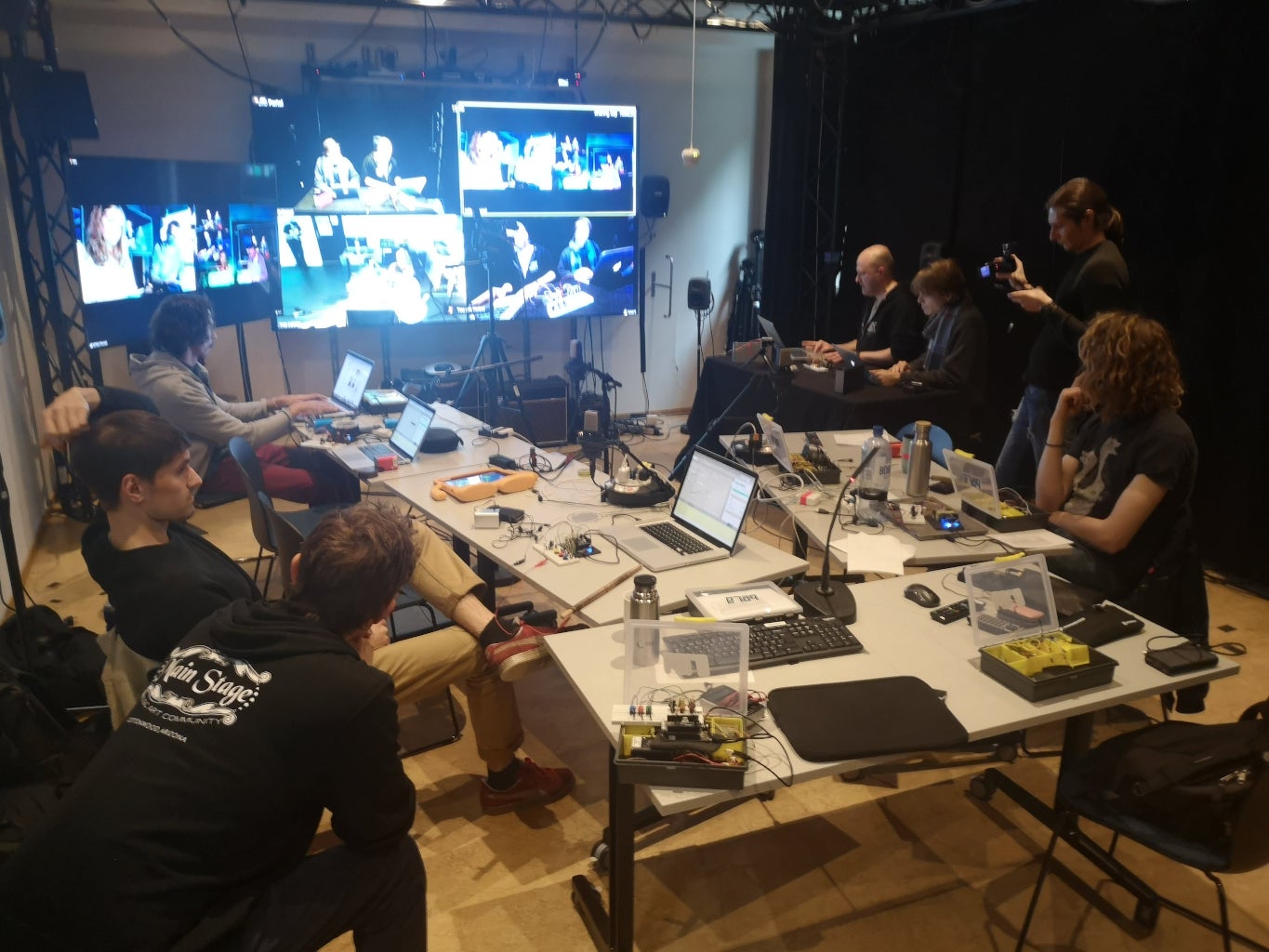Staggering towards the light
During a hackathon in our introduction course to physical computing, we developed a prototype of a DMI. In our previous blog post from this project we explained how the system was built and gave a short summary of our performance. In this blog post however, we will look at the instrument from an HCI-perspective. Where the main focus will be a summary of the problem space, the research question, the methodology used and our main findings and contributions.
Research question
In the spirit of all great hackathons we were handed a theme as our starting point. For this particular project the theme we were delt was «recycling». The way we chose to approach this theme was to embrace the topic in every aspect of our DMI. First of all we created new sounds by recycling sound itself and second of all chose to manipulate these sounds with controllers made of recycled materials.
An important aspect we tried to take into consideration was the importance of gesture and physical correlation of movement to sound production, both for performers and for the audience. Our main goal for this project was to create a link between theme, gesture and sound.
Methodology
Our first approach to the task was to define the problem space by asking the questions: What are we trying to achieve, how will we achieve it and what will we create?
Our first decision was to limit ourselves to just one sound source. By doing this we managed to stick to the theme in several aspects of our system. The limitation also gave us an opportunity to work on our creative thinking. By defining a set boundary we were forced to figure out how we could turn a single sound into a creative musical performance.
Our second task was to find everyday objects which could function as possible controllers. By using a metal rod and a drum stick wrapped in rustic copper we were able to achieve our goal of creating music with recycled materials.
All in all we felt that this was a good solution in our quest to make a link between theme, gesture and sound.
Main findings and contribution
In conclusion we succeeded in creating a functional and unique instrument with a wide range of musical sounds and controllers. However, where we perhaps didn’t manage succeed were in the terms of usability of the system. The controller made out of trash turned out to be difficult to control, unreliable and highly unstable. The one-shot sample controller (see other blog post), due to the fiddliness of the Bela, was also somewhat hard to control. At the same time the lack of control contributed with an element of surprise in our performance. As neither the performers or the audience knew what to expect.
Through this project we showed how music technologists can develop new and exiting DMI’s in a green and sustainable manner. The garbage can is full of usable materials one can use in the pursuit of musical greatness.

